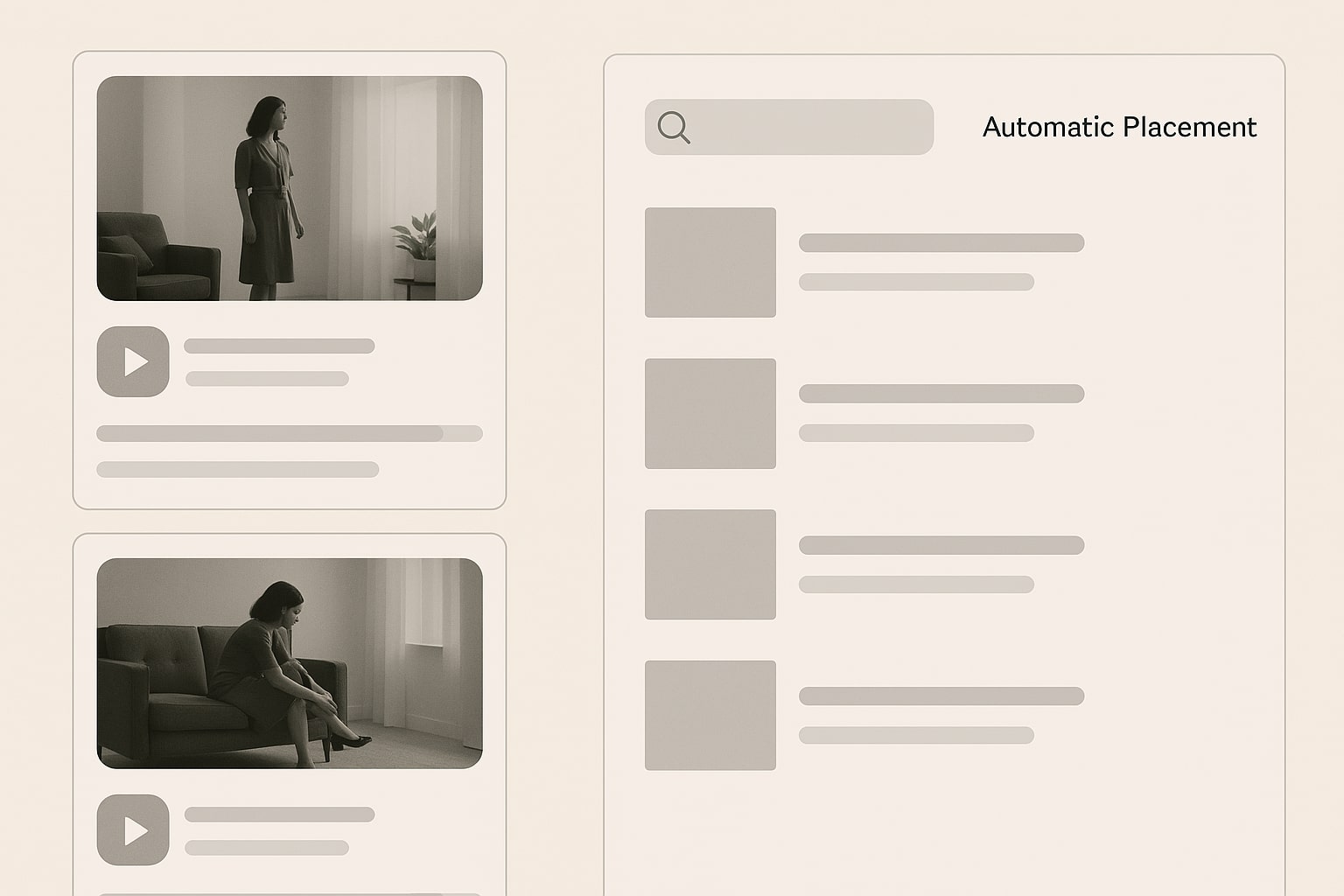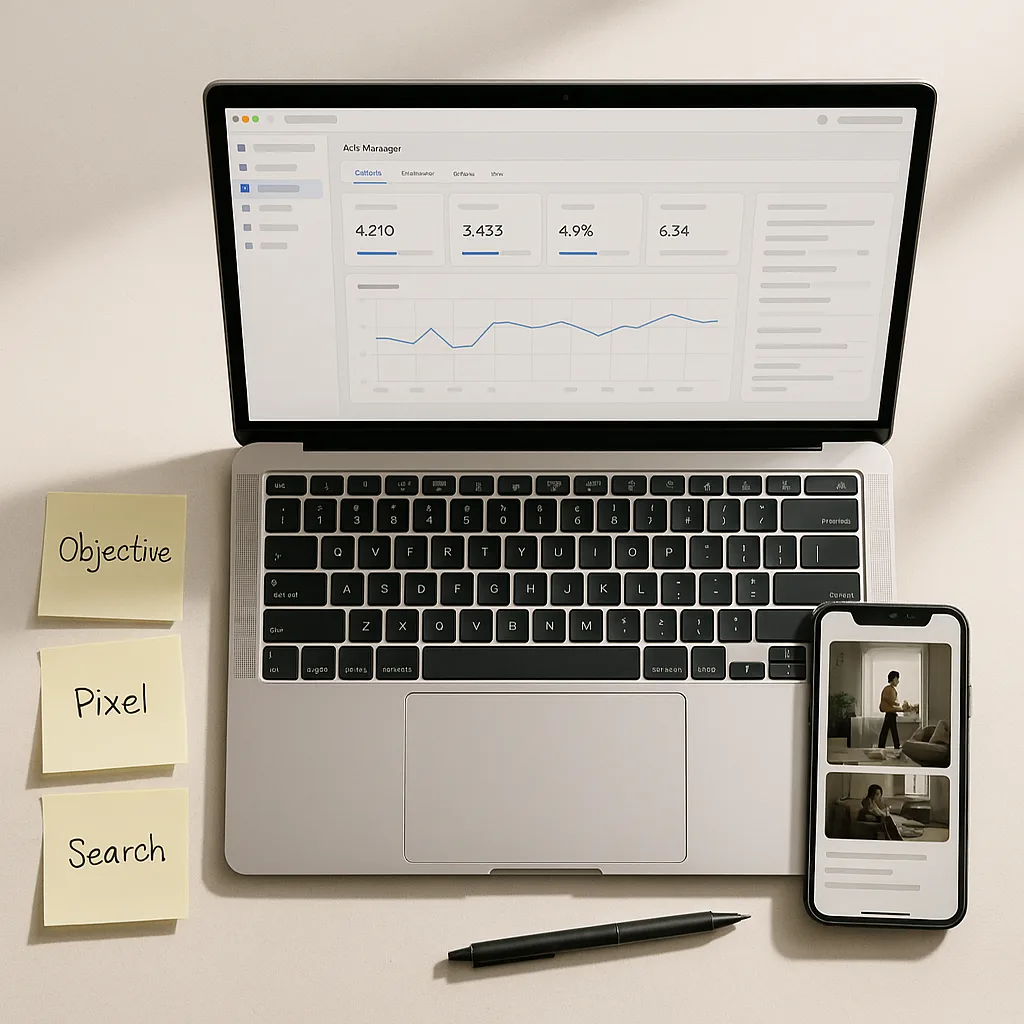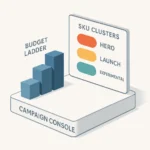TikTok blends entertainment and intent, letting ads feel native without losing measurability. The combination of high watch time, creator-first formats, and commerce features means brands can prospect, educate, and convert in the same feed. Scale isn’t only about budget here, it’s about feeding the system consistent signals and a steady cadence of fresh concepts. With Search inventory now an extension of in-feed, the same assets can harvest demand you didn’t know you had. Finally, AI-native workflows (from script to avatar to voiceover) compress creative cycles, letting small teams compete with bigger ones.
A clean account prevents governance headaches and noisy data later. Set up a Business Center as your organization layer, then create or claim your Ads Manager within it so assets, roles, and billing live in one place. Map collaborators to least-privilege roles: Admins for owners, Operators for buyers, Analysts for reporting—this reduces risk and audit time. Align billing and currency at the Business Center level before launching your first campaign. If you work with agencies or creators, share assets from Business Center rather than one-off invites to keep access tidy.
Get the Latest Article Updates via WhatsApp
Thank you! You will receive article updates via WhatsApp.
An error occurred. Please try again.
Roles, Access, and Naming Conventions
Adopt a naming scheme you can filter and pivot in reports.
-
Campaign: Country_Objective_Audience_Theme → US_Conversions_Broad_SummerPromo
-
Ad Group: Placement_BidStrategy_Event → Auto+Search_LC_Purchase
-
Ad: Concept##_Hook_Version → C03_ProblemSolution_V2
This looks simple, but it’s the difference between analysis and guesswork when you’re shipping 20+ creatives a week.
Campaign Structure That Scales
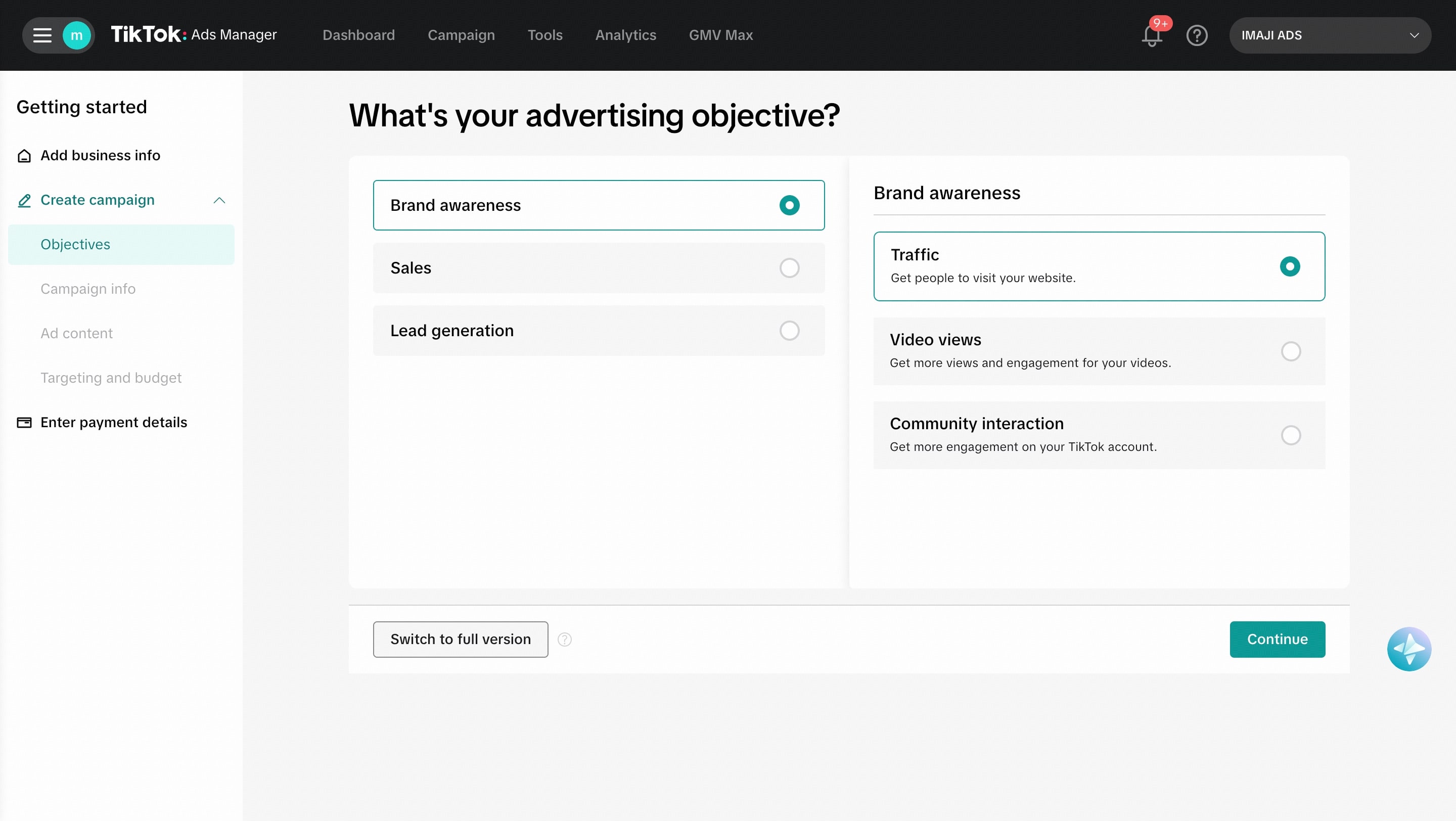
TikTok Ads Manager Advertising Objective
Structure is how you protect learning. A crisp setup reduces false positives, prevents “Franken-campaigns,” and keeps changes interpretable. Start with one core objective per campaign; don’t mix goals in the same container. At the ad-group level, set your optimization event and keep audiences broad unless a segment is already proven. At the ad level, test distinct concepts (different messages and angles), not just micro-edits of one idea. Over time, simplify: let winners consolidate delivery instead of spinning out dozens of near-duplicates.
Campaign → Ad Group → Ad
Think of the campaign as intent, the ad group as mechanics, and the ad as message. Your objective (Traffic, Leads, App, Conversions, Shopping) translates strategy into auction behavior. The ad group decides where and how you bid—placements, bidding model, and event. The ad is where you earn attention: hooks, proof, and CTA must match the landing page. Keep each layer honest to its job so diagnostics stay obvious.
Objectives and When to Use Them
-
Traffic / Video Views: cheap learnings, creative screening, and early-funnel testing.
-
App Installs: once SDK/SKAN events are stable and early retention is known.
-
Lead Generation: short sales cycles and strong follow-up SLAs.
-
Conversions (Website): when Purchase/Lead events are firing cleanly with value.
-
Shopping / Product Sales: with catalogs or TikTok Shop connected for GMV outcomes.
Tracking Foundations
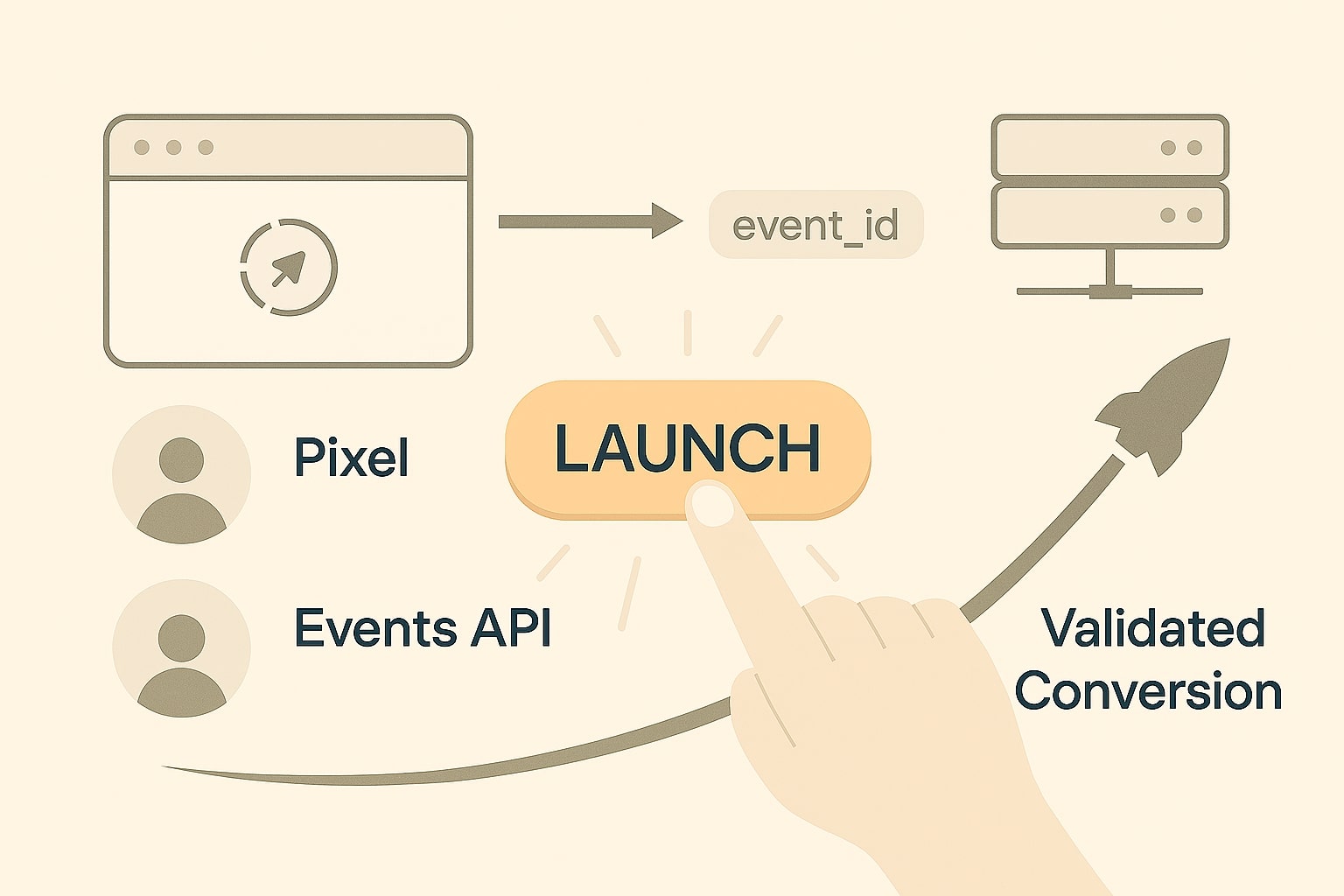
Pixel for speed, Events API for consistency, hybrid with deduplication
Optimization is only as good as your events. Decide what a “good” conversion looks like (quality, value, and recency), then implement to capture it consistently. Pixel is fast to deploy but client-side; Events API (EAPI) is server-side and more resilient. The recommended path for web conversions in 2025: Hybrid (Pixel + EAPI) with event deduplication, passing consistent match keys for better attribution and audiences. Use Test Events tools to validate names, values, and match quality before you spend a cent.
Pixel vs Events API Overview
Pixel collects in browser; EAPI sends from your server or CDP. Running both increases survival against browser limits and network quirks. The catch is dedup: assign a unique event_id to the same action across Pixel and EAPI so only one counts in reporting. Most tag managers, CDPs, and connectors expose this parameter out of the box—wire it once, test often, and monitor mismatch warnings.
Event Mapping and Testing
Map the entire funnel—ViewContent → AddToCart → InitiateCheckout → Purchase (or SubmitLead)—and pass value and currency where applicable. In Events Manager, use Test Events to walk through the site on mobile, triggering actions while watching real-time logs. Validate parameter presence, value accuracy, and match rate; fix gaps before launch so your first dollars buy learning, not debugging.
Placements & Inventory Basics
TikTok defaults to Automatic Placements to maximize efficient reach. Keep it on at the start so the system can explore In-Feed and Search without starving either. Search delivery is relevance-gated—query, creative, captions, and on-video text all matter—so ensure your message and metadata align. If you later see consistent waste in a specific surface, you can pin or exclude with a clear hypothesis and an A/B plan. Remember that TikTok’s placement logic evolves; building for flexibility beats hard-coding a single lane.
Creative Specs & Policies You Can’t Ignore
TikTok is creative-led, and specs are non-negotiable. Use 9:16 vertical at 1080×1920 or higher, keep files under 500 MB, and ship lengths the algorithm can learn from (15–34 seconds recommended for broad DR, but longer is fine when the story earns it). Add on-video text with your core promise, a clear CTA, and safe-zone awareness so UI chrome doesn’t cover your captions. Test voiceover for sound-off environments and subtitling for clarity. Finally, review policy basics (claims, restricted categories) before upload; rejected ads waste the learning window.
Pro Tip: Instead of five edits of the same video, launch 3–5 different concepts per ad group—problem/solution, before/after, demo/testimonial, listicle, and founder POV. Concepts test messages; edits test craft.
Launch Checklist & First 72 Hours Monitoring
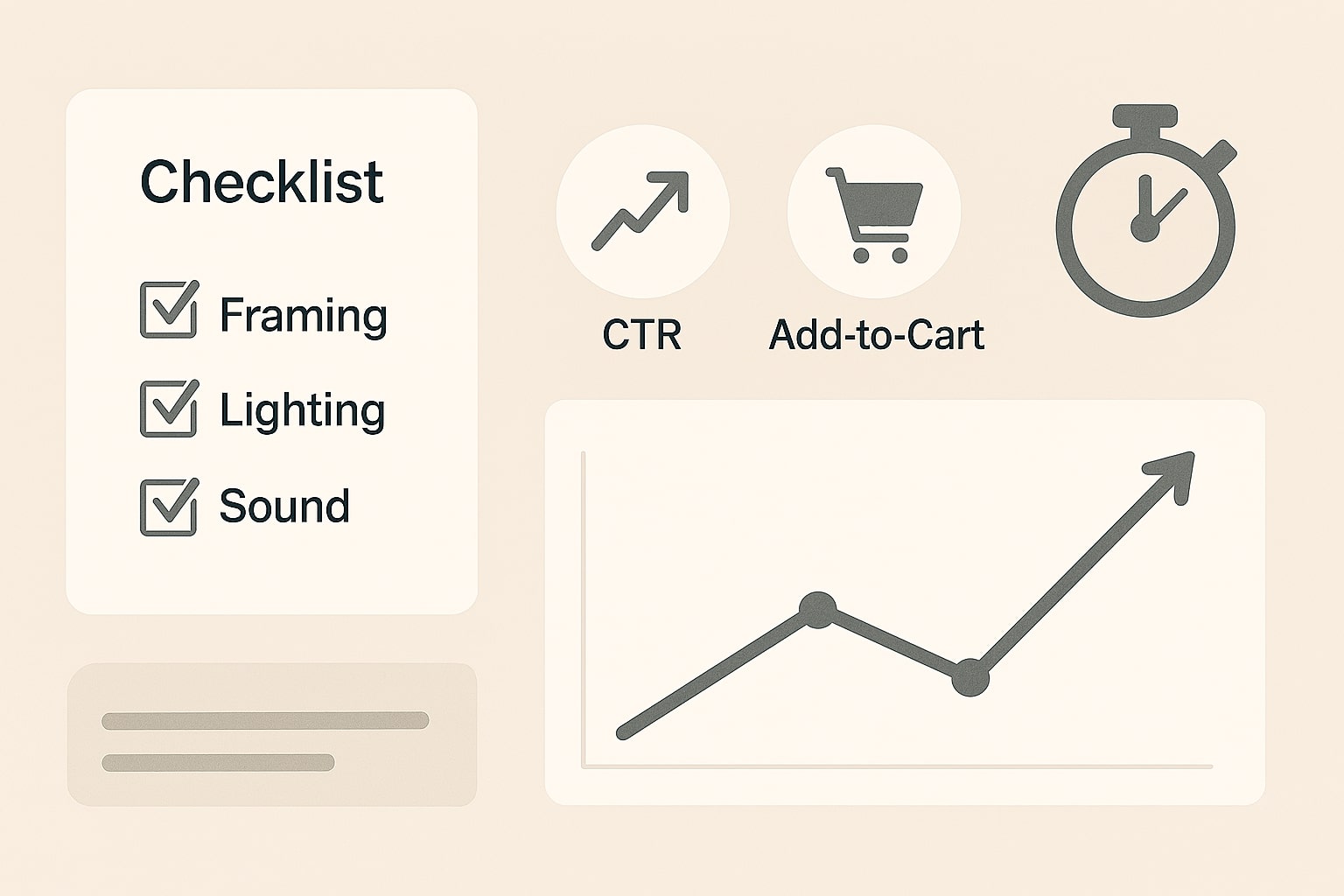
A disciplined first 72 hours protects learning and budget
Your first days determine whether the system gets enough clean signals to stabilize. Enter with a checklist; exit with a plan.
Before launch
Have events validated (names, values, match keys), Hybrid + dedup if possible, one objective/event per campaign, broad audience with sane exclusions, Lowest Cost bidding, and three to five concepts live with distinct hooks. Confirm mobile page speed and message match; Search clicks punish slow or off-promise pages.
First 24 hours
Expect volatility. Don’t thrash settings—only fix hard errors like disapprovals, broken links, or completely stalled delivery. If one ad chews budget with no downstream actions, pause that ad, not the whole ad group, and backfill with a new concept.
Hours 24–72
Read early indicators: outbound CTR, LP bounce, add-to-cart rate, event quality (refund-prone orders often have tells). If delivery is constrained but signals are strong, scale in measured steps rather than cloning (which can reset learning). If performance diverges by concept, kill bottom 20–30% and reallocate to winners so the model keeps learning from the right data.
After day 3
Consider Cost Cap once you see stable conversion flow and want tighter CPA control. Plan your next wave of creatives around the winning message and test new hooks, not just new edits. Keep a weekly rhythm: retire fatigued assets, seed two fresh concepts, and log outcomes so you’re never guessing why a test won or lost.
Launch With Confidence

Ready to launch with confidence, get expert help when you need it
If you set up governance, feed clean events, keep placements flexible, and ship real concept variety, TikTok’s auction will do more of the heavy lifting for you. The first campaign is less about “hacks” and more about respecting how the system learns, then making creative the variable you test with discipline. Stick to one objective, protect the learning phase, and measure what truly moves profit, not just cheap clicks. When in doubt, align your on-video text, captions, and landing page headline to the same promise so Search and Feed both convert. If you’d rather skip the guesswork, I can help — I offer hands-on TikTok Ads strategy, setup, and optimization. Reach me via the Contact page or tap the Let’s Chat button for a quick consult, and feel free to ask questions or share your experience in the comments so others can learn with you.
Reference
-
DataReportal — Digital 2025: Top Social Platforms (time-spent & attention benchmarks for TikTok globally). DataReportal – Global Digital Insights
-
Insider Intelligence/eMarketer — US TikTok Usage & Time Spent 2025 (forecast: ~52 minutes/day among US users). EMARKETER
-
TikTok Business Help Center — About Automatic Search Placement (how Search delivery works and what signals matter). TikTok For Business
-
TikTok Business Help Center — Automatic and Select Placement (recommendations for Automatic Placements). TikTok For Business
-
TikTok Business Help Center — TikTok Auction In-Feed Ads (official specs: aspect ratios, max file size, duration). TikTok For Business
-
TikTok Business Help Center — Set up and Verify Pixel (Pixel overview and install flow). TikTok For Business
-
TikTok Business Help Center — About Events API (server-side tracking overview and benefits). TikTok For Business
-
TikTok Business Help Center — Getting Started with Events API (standalone vs hybrid with Pixel; setup paths). TikTok For Business
-
TikTok Business Help Center — Event Deduplication (why/how to dedup Pixel + Events API with event_id). TikTok For Business
-
TikTok Business Help Center — Standard Events & Parameters (recommended event names, values, and fields). TikTok For Business
-
TikTok Business Help Center — Learning Phase (what triggers it, stabilization expectations, edit guidance). TikTok For Business
-
TikTok Business Help Center — Best Practices for Bidding Strategies (budget heuristics incl. 10× CPA guidance). TikTok For Business
-
TikTok Business Help Center — Solutions for Scaling Auction Ad Spend (when to scale; ≥50 conversions/week guidance). TikTok For Business
-
TikTok for Business Blog — Meet TikTok Symphony, Our New Creative AI Suite (official introduction). TikTok For Business
-
TikTok for Business Blog — Create TikTok-Style Videos Faster With New AI Tools (Symphony) (2025 feature updates). TikTok For Business
-
Reuters — TikTok launches AI-powered Symphony Creative Studios globally (news context on rollout). Reuters
